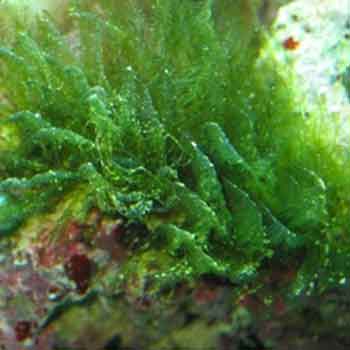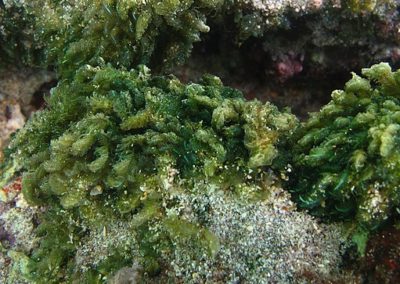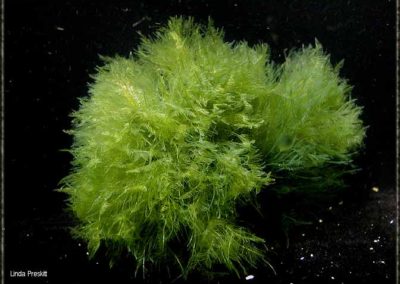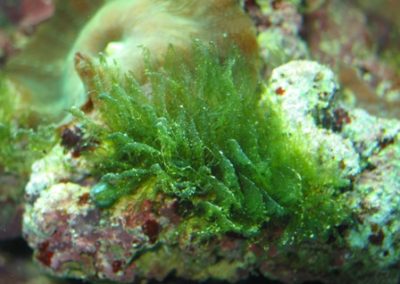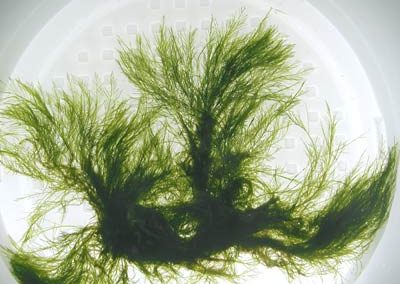Introduction to Filamentous Hair Algae (Bryopsis):
Bryopsis is a nuisance alga that can overgrow corals and live rock. It is generally dark green and filamentous. It is an indicator of high levels of nitrates and phosphates. Often, the nitrates and phosphates are not detectable because they are being used by the Bryopsis.
Filamentous Hair Algae is not palatable to most reef herbivores, but some sea urchin and sea hares will eat these algae.
What Bryopsis looks like:
Bryopsis is a type of dark green alga. There are many types of Bryopsis, taking on many different forms.
For identification of your alga, reference a book such as Algae: A Problem Solver Guide by Julian Sprung.
Signs of infection:
Green stringy alga located on rocks and coral bases.
Life Cycle:
This alga can spread through asexual reproduction and sexual reproduction. Asexual reproduction is accomplished by fragmentation. This is one way it can spread fast and out of control in the aquarium.
Fragmentation happens by pulling the alga out of the aquarium. It is not recommended pulling alga off the rocks in the aquarium without a siphon to pull out little fragments.
Prevention:
These alga breakouts are caused by low magnesium, low alkalinity, low ph, high levels of dissolved organic compounds, high levels of nitrates or phosphates and/or temperature swings.
Monitoring these parameters is important in maintaining a healthy aquarium.
Treatment:
- For isolated outbreaks, dip coral and/or rock(s) in CoralRx for 5 – 10 minutes.
- After 5 – 10 minutes, remove the coral and discard the coral dip. Do not reuse coral dip as Coral Rx may have also removed parasites that have been known to release toxins.
- Rinse coral and rock with clean saltwater and return to the aquarium.
- Next, you must correct your water chemistry.
- Repeat coral dip in 3 to 5 days and recheck your water chemistry daily.
For whole tank outbreaks, correct water chemistry, reduce photoperiod to 6 hours per day and clean skimmer on a daily basis. Cleaning a skimmer on a daily basis can improve skimming efficiency by up to 50%.
